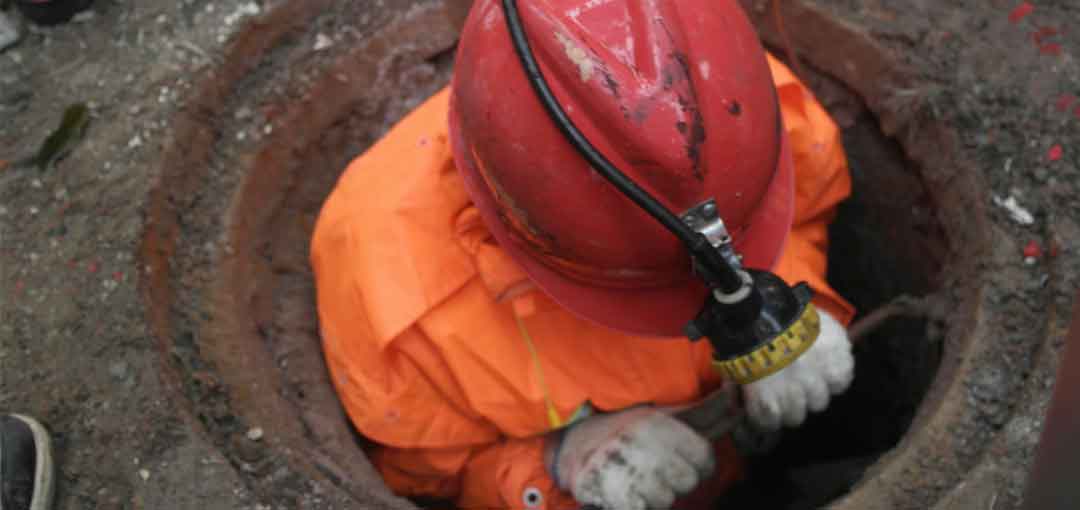The Importance Of Confined Space Entry Training
The Importance Of Confined Space Entry Training
November 8, 2023 |
Confined spaces, while crucial for various industries, can be silent killers if not approached with caution and expertise. These enclosed areas, such as tanks, silos, and tunnels, often harbor unseen dangers like toxic gases, limited oxygen, and the potential for entrapment. To navigate these hazards safely, confined space entry training is not just a valuable asset; it is an absolute necessity.
Enhanced Safety
The foremost reason for prioritizing confined space entry training is safety. Workers who understand the unique risks associated with confined spaces are better equipped to recognize and mitigate potential hazards. They learn to conduct thorough assessments, use safety equipment effectively, and respond swiftly in case of emergencies. This knowledge and preparedness significantly reduce the likelihood of accidents and injuries.
Prevention Of Fatalities
Confined spaces have claimed countless lives over the years. Without proper training, workers may underestimate the dangers or fail to recognize warning signs. Confined space entry training provides the essential education needed to prevent fatalities. It instills a heightened sense of caution and awareness, ensuring that those who enter these spaces do so with a clear understanding of the risks involved.
Fatalities resulting from confined space accidents are not only tragic but also avoidable. Confined space entry training equips workers with the knowledge to make informed decisions about entering a confined space or implementing alternative solutions when necessary. This proactive approach to safety can mean the difference between life and death in critical situations.
Compliance With Regulations
In many regions, strict regulations govern confined space work to protect worker safety. Failure to comply with these regulations can result in severe penalties and legal consequences for companies. Confined space entry training ensures that both workers and employers are well informed about their responsibilities and obligations, helping businesses remain in full compliance with the law.
Risk Assessment Skills
A fundamental aspect of confined space entry training is risk assessment. Workers learn to identify potential hazards, evaluate atmospheric conditions, and determine the necessary safety measures. This skill is invaluable, as it allows for informed decision-making before, during, and after confined space entry, reducing the likelihood of accidents caused by oversight.
Risk assessment is a critical skill that goes beyond confined spaces; it’s a life skill. The ability to assess risks and make informed choices extends to various aspects of daily life. By honing these skills through confined space entry training, individuals become more safety-conscious in all their activities, both at work and in their personal lives.
Proper Equipment Usage
Safety equipment is a lifeline in confined spaces. From gas detectors to harnesses and ventilation systems, knowing how to use this equipment correctly can make all the difference in an emergency. Confined space entry training not only familiarizes workers with these tools but also teaches them when and why to use them, ensuring optimal safety.
The proper usage of rescue equipment is a significant component of confined space entry training. Workers gain a deep understanding of the purpose and function of each piece of equipment, enabling them to make informed decisions about its use. This knowledge is transferable, allowing individuals to apply equipment usage principles in various work settings to enhance safety.
Emergency Response
Even with precautions in place, emergencies can still occur in confined spaces. When they do, a well-trained team is essential for a swift and effective response. Confined space entry training includes emergency procedures and rescue techniques, enabling workers to assist colleagues or themselves in critical situations.
The ability to respond effectively in emergencies is a valuable skill beyond confined spaces. It teaches individuals to remain composed under pressure, think critically, and take decisive action. These qualities are not only advantageous in the workplace but also in everyday life, as they prepare individuals to handle unexpected challenges with confidence and competence.
Team Coordination
Confined space work often involves teamwork. Effective communication and coordination are crucial to ensure everyone’s safety. Training programs emphasize the importance of clear communication within a confined space team, reducing the risk of misunderstandings and errors during operations.
Continuous Improvement
Safety is an evolving field, and confined space entry training evolves with it. Training programs are regularly updated to incorporate the latest safety standards and best practices. This commitment to continuous improvement ensures that workers are always equipped with the most up-to-date knowledge and techniques.
Confidence And Peace Of Mind
Confined space entry training instills confidence in workers. Knowing that they have the skills and knowledge to safely navigate confined spaces provides peace of mind. This confidence can positively impact job performance and reduce stress associated with working in potentially hazardous environments.
Confidence and peace of mind are assets in any endeavor. When individuals are secure in their abilities and have faith in their training, they are more likely to excel in their chosen fields. This self-assuredness is not confined to the workplace but spills over into personal life, enhancing overall well-being and happiness.
Confined space entry training is not an optional extra; it is a vital component of workplace safety in industries that deal with enclosed spaces. It serves as a critical investment in the well-being of workers, helping to prevent accidents, save lives, and maintain legal compliance. With the knowledge, skills, and awareness gained through training, individuals and teams can approach confined spaces with confidence, knowing they have the tools to mitigate risks and respond effectively to any challenges that may arise.
